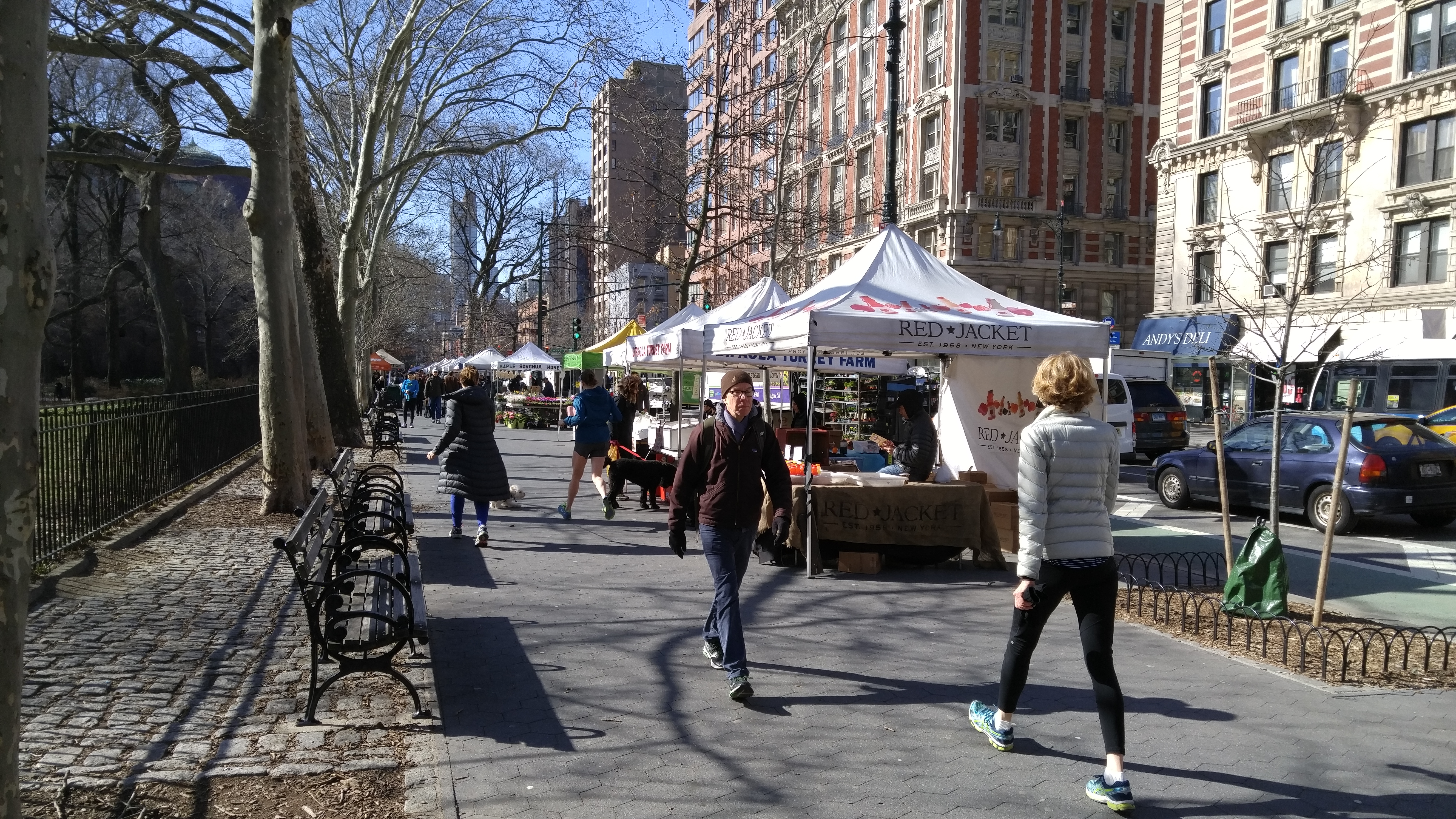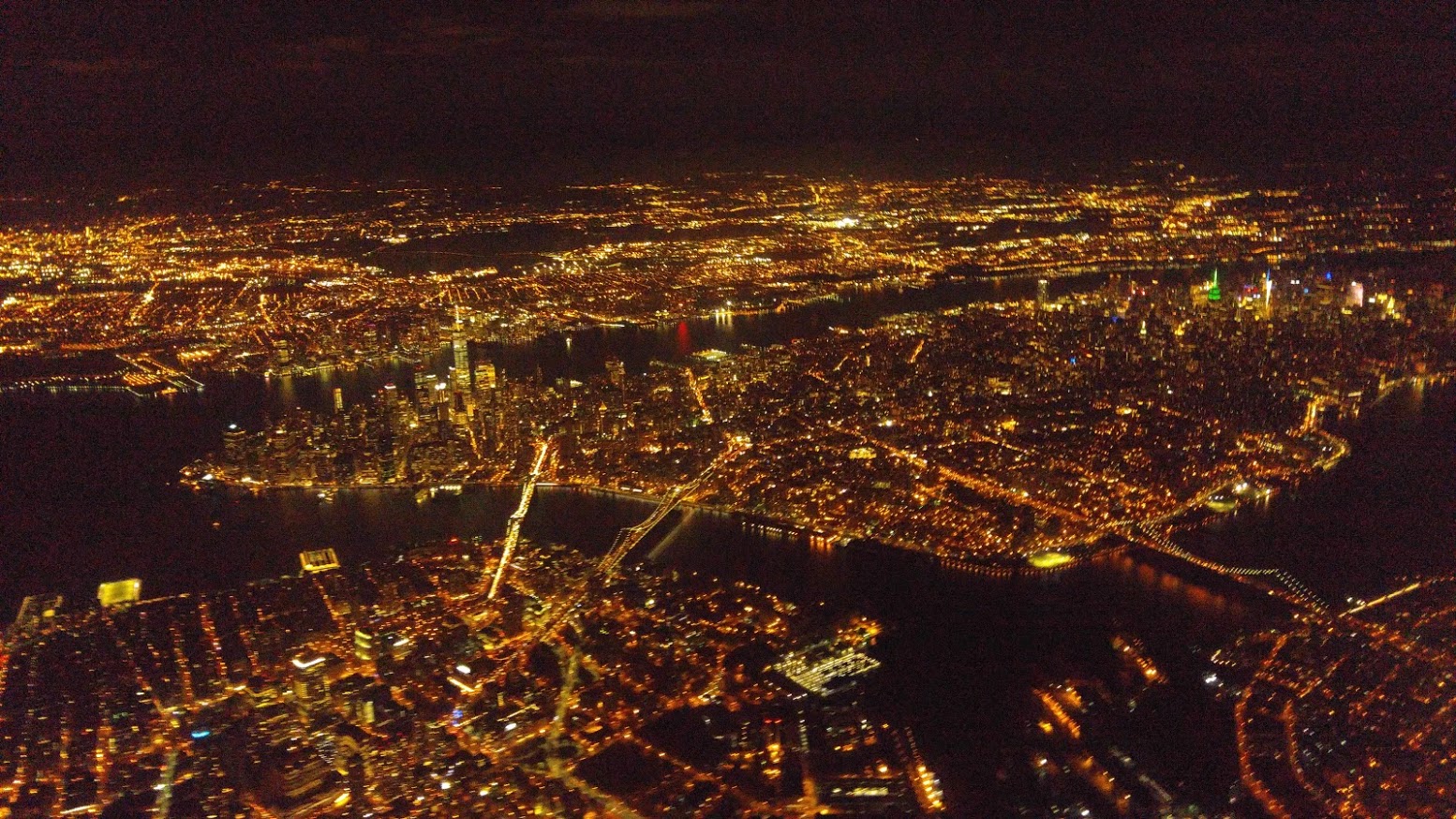Why posting is slow today:

Software developer Todd Schneider has analyzed 22 million CitiBikes trips (the New York equivalent of Chicago's Divvy). He's even got some cool animations:
If you stare at the animation for a bit, you start to see some trends. My personal favorite spots to watch are the bridges that connect Brooklyn to Lower Manhattan. In the morning, beginning around 8 AM, you see a steady volume of bikes crossing from Brooklyn into Manhattan over the Brooklyn, Manhattan, and Williamsburg bridges. In the middle of the day, the bridges are generally less busy, then starting around 5:30 PM, we see the blue dots streaming from Manhattan back into Brooklyn, as riders leave their Manhattan offices to head back to their Brooklyn homes.
Sure enough, in the mornings there are more rides from Brooklyn to Manhattan than vice versa, while in the evenings there are more people riding from Manhattan to Brooklyn. For what it’s worth, most Citi Bike trips start and end in Manhattan. The overall breakdown since the program’s expansion in August 2015:
- 88% of trips start and end in Manhattan
- 8% of trips start and end in an outer borough
- 4% of trips travel between Manhattan and an outer borough
There are other distinct commuting patterns in the animation: the stretch of 1st Avenue heading north from 59th Street has very little Citi Bike traffic in the morning, but starting around 5 PM the volume picks up as people presumably head home from their Midtown offices to the Upper East Side.
Schneider previously analyzed 1.1 billion New York taxi trips.
Almost a meter of snow fell on parts of the United States over the weekend. Even in places that get big snowfalls from time to time, the results were grim:
While New York City emerged from the season’s first blizzard with relatively little damage, the toll along the Eastern Seaboard as a whole was more sobering: 29 deaths related to the storm, thousands of homes without power and serious flooding in coastal areas.
In Baltimore, Mayor Stephanie Rawlings-Blake said on Sunday that she could not give a timeline for clearing the streets. In Washington, the leadership of the House of Representatives — scheduled to convene on Monday for a pro forma session — said no votes would be held this week. Federal offices will be closed on Monday, as will state offices in Maryland and Virginia.
Most of the storm’s victims died while driving on icy highways or shoveling snow. The New York Police Department went to the scene of 401 accidents and towed 367 vehicles by 4 a.m. Sunday, about four hours after the snow stopped. Three of those who died while shoveling were New Yorkers in Queens and on Staten Island, all men over 60, the authorities said. Two others were on Long Island, a 61-year-old man in West Hempstead and a 94-year-old man in Smithtown. His body was found next to a snow blower, the authorities said.
Clear skies today over the East let NASA composite this awesome photo of the snow:

Everything from New York to Richmond, Va., is shut down today as a major winter storm drops meters of snow on 50 million people:
Weather emergencies were declared in at least 10 states, including in New York and New Jersey, and the storm has disrupted travel throughout the region, with thousands of flights canceled and public transit shut down in Washington, Baltimore, Philadelphia and New Jersey. In New York, bus lines were scheduled to be suspended at noon Saturday.
Forecasters were predicting 300 to 600 mm of snow to fall in the city by the time the storm ended and warned of flooding in coastal areas, especially along the Jersey Shore. On Saturday morning, water had swept onto the streets of some oceanfront towns in New Jersey, including Ocean City.
“If there was a trend overnight, it was that the heavier axis of snow has now shifted into New York City and onto Long Island,” said Patrick Burke, a meteorologist with the National Weather Service.
Around Washington, where some of the city’s police officers were issued shovels at their morning roll call, the storm had already dropped 280 to 380 mm of snow by Saturday morning. Even as the storm moved north, Mr. Burke said the Washington region should still receive lighter snowfall throughout the day, raising totals in some places to over 20 inches.
Meanwhile, in Chicago...nothing. We had a flurry, maybe two, and we're expecting above-normal temperatures—up to 9°C above normal, in fact—through the end of January. The little snow we have on the ground could be gone by tomorrow.
Cooling my heels (just what does that cliche mean, anyway?) at JFK. I miss New York. I don't want to live here again, but I do like visiting.
I mean, look:

That might look a little better if I could get Lightroom to work on my Surface Pro. Time to reinstall it, again.